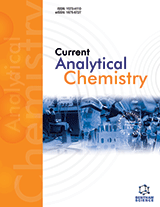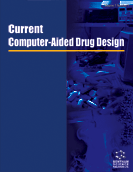Abstract
Chemogenomics is the study of the interaction of functional biological systems with exogenous small molecules, or in broader sense the study of the intersection of biological and chemical spaces. Chemogenomics requires expertises in biology, chemistry and computational sciences (bioinformatics, cheminformatics, large scale statistics and machine learning methods) but it is more than the simple apposition of each of these disciplines. Biological entities interacting with small molecules can be isolated proteins or more elaborate systems, from single cells to complete organisms. The biological space is therefore analyzed at various postgenomic levels (genomic, transcriptomic, proteomic or any phenotypic level). The space of small molecules is partially real, corresponding to commercial and academic collections of compounds, and partially virtual, corresponding to the chemical space possibly synthesizable. Synthetic chemistry has developed novel strategies allowing a physical exploration of this universe of possibilities. A major challenge of cheminformatics is to charter the virtual space of small molecules using realistic biological constraints (bioavailability, druggability, structural biological information). Chemogenomics is a descendent of conventional pharmaceutical approaches, since it involves the screening of chemolibraries for their effect on biological targets, and benefits from the advances in the corresponding enabling technologies and the introduction of new biological markers. Screening was originally motivated by the rigorous discovery of new drugs, neglecting and throwing away any molecule that would fail to meet the standards required for a therapeutic treatment. It is now the basis for the discovery of small molecules that might or might not be directly used as drugs, but which have an immense potential for basic research, as probes to explore an increasing number of biological phenomena. Concerns about the environmental impact of chemical industry open new fields of research for chemogenomics.
Keywords: Chemogenomics, chemical genetics, bioinformatics, cheminformatics, biomarker, machine learning
Combinatorial Chemistry & High Throughput Screening
Title: Chemogenomics: A Discipline at the Crossroad of High Throughput Technologies, Biomarker Research, Combinatorial Chemistry, Genomics, Cheminformatics, Bioinformatics and Artificial Intelligence.
Volume: 11 Issue: 8
Author(s): Eric Marechal
Affiliation:
Keywords: Chemogenomics, chemical genetics, bioinformatics, cheminformatics, biomarker, machine learning
Abstract: Chemogenomics is the study of the interaction of functional biological systems with exogenous small molecules, or in broader sense the study of the intersection of biological and chemical spaces. Chemogenomics requires expertises in biology, chemistry and computational sciences (bioinformatics, cheminformatics, large scale statistics and machine learning methods) but it is more than the simple apposition of each of these disciplines. Biological entities interacting with small molecules can be isolated proteins or more elaborate systems, from single cells to complete organisms. The biological space is therefore analyzed at various postgenomic levels (genomic, transcriptomic, proteomic or any phenotypic level). The space of small molecules is partially real, corresponding to commercial and academic collections of compounds, and partially virtual, corresponding to the chemical space possibly synthesizable. Synthetic chemistry has developed novel strategies allowing a physical exploration of this universe of possibilities. A major challenge of cheminformatics is to charter the virtual space of small molecules using realistic biological constraints (bioavailability, druggability, structural biological information). Chemogenomics is a descendent of conventional pharmaceutical approaches, since it involves the screening of chemolibraries for their effect on biological targets, and benefits from the advances in the corresponding enabling technologies and the introduction of new biological markers. Screening was originally motivated by the rigorous discovery of new drugs, neglecting and throwing away any molecule that would fail to meet the standards required for a therapeutic treatment. It is now the basis for the discovery of small molecules that might or might not be directly used as drugs, but which have an immense potential for basic research, as probes to explore an increasing number of biological phenomena. Concerns about the environmental impact of chemical industry open new fields of research for chemogenomics.
Export Options
About this article
Cite this article as:
Marechal Eric, Chemogenomics: A Discipline at the Crossroad of High Throughput Technologies, Biomarker Research, Combinatorial Chemistry, Genomics, Cheminformatics, Bioinformatics and Artificial Intelligence., Combinatorial Chemistry & High Throughput Screening 2008; 11 (8) . https://dx.doi.org/10.2174/138620708785739961
| DOI https://dx.doi.org/10.2174/138620708785739961 |
Print ISSN 1386-2073 |
| Publisher Name Bentham Science Publisher |
Online ISSN 1875-5402 |
 8
8
- Author Guidelines
- Bentham Author Support Services (BASS)
- Graphical Abstracts
- Fabricating and Stating False Information
- Research Misconduct
- Post Publication Discussions and Corrections
- Publishing Ethics and Rectitude
- Increase Visibility of Your Article
- Archiving Policies
- Peer Review Workflow
- Order Your Article Before Print
- Promote Your Article
- Manuscript Transfer Facility
- Editorial Policies
- Allegations from Whistleblowers


























